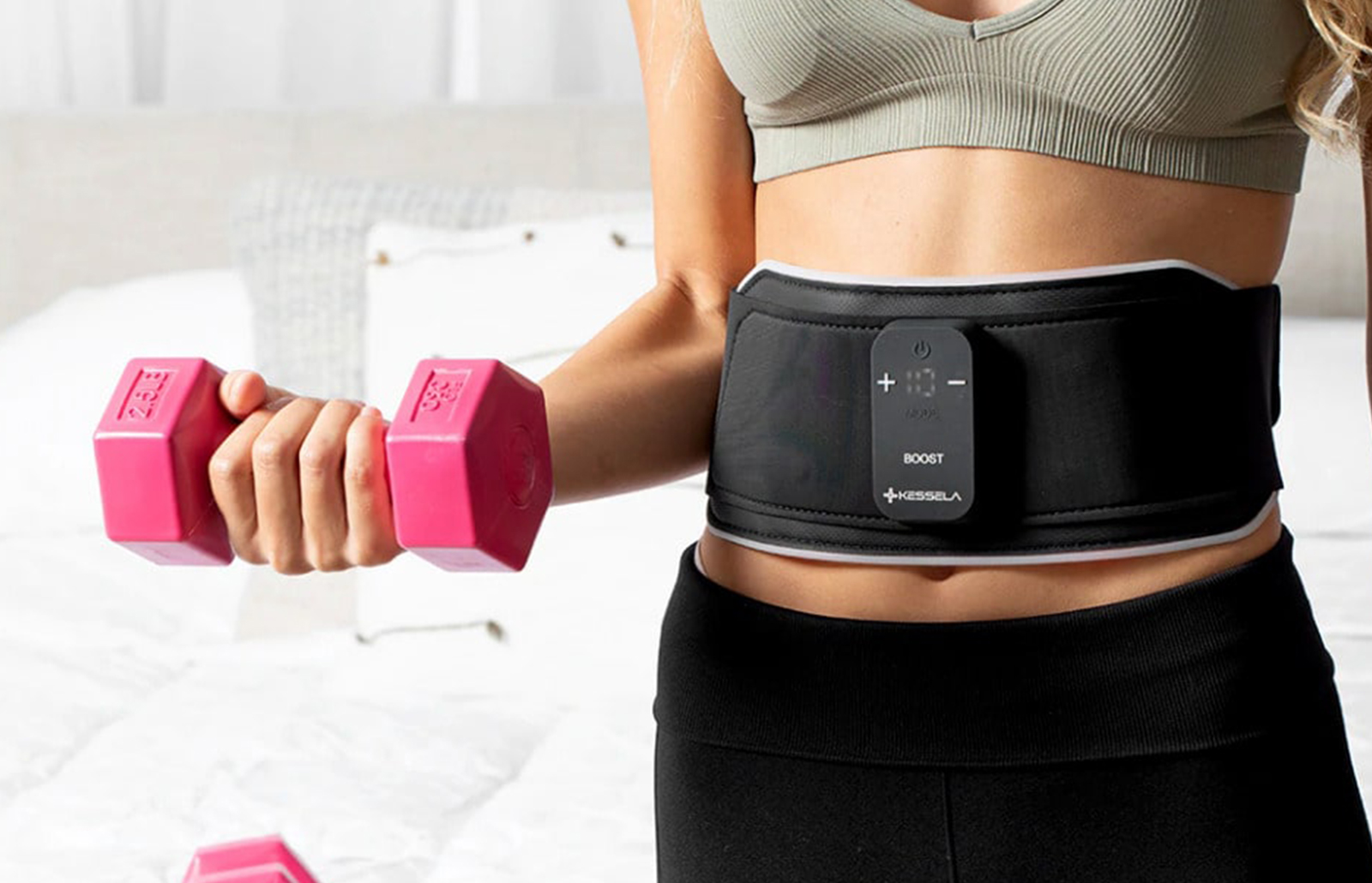
Low-Level Laser Therapy (LLLT), also known as red light therapy or photobiomodulation, has gained significant attention as a non-invasive option for body contouring and spot fat reduction. The demand for alternatives to surgical fat reduction methods has driven interest in treatments that offer less risk, no downtime, and visible results. LLLT has emerged as one such option, with growing clinical evidence supporting its efficacy in reducing fat deposits and reshaping specific areas of the body. This blog explores how LLLT works, its benefits, and scientific studies backing its use for fat reduction.
What is Low-Level Laser Therapy (LLLT)?
LLLT involves exposing targeted areas of the body to low-power lasers or light-emitting diodes (LEDs). The specific wavelengths of light (usually in the red or near-infrared spectrum, between 600 and 1200 nanometers) penetrate the skin and interact with the fat cells (adipocytes) beneath. The light energy stimulates biological processes within the cells, triggering the release of stored fat.
The mechanism that drives fat reduction involves the mitochondria, the energy-producing centers of the cells. The light stimulates the mitochondria, which leads to the breakdown of triglycerides stored in fat cells into free fatty acids and glycerol. These byproducts are then released into the bloodstream, where they can be used as energy by the body, thereby reducing the size of fat cells.
How LLLT Works for Fat Reduction
Unlike traditional fat reduction methods, which often destroy or remove fat cells entirely (as in liposuction), LLLT causes fat cells to shrink without harming the cells themselves. This makes LLLT a gentler option for individuals seeking to reduce localized fat deposits without undergoing invasive procedures.
The process of photolipolysis—where light energy helps break down fat—is central to LLLT’s fat-reducing effects. The laser light penetrates the skin and temporarily creates pores in the fat cells, allowing the fatty acids inside to leak out. The body’s natural lymphatic system processes and removes these fatty acids, which are then metabolized and excreted. Over time, consistent LLLT treatments can lead to visible reductions in fat deposits and improved body contouring.
Clinical Evidence Supporting LLLT for Fat Reduction
1. Study on LLLT and Waist Circumference Reduction
One of the most notable studies on LLLT was published in the Journal of Obesity Surgery in 2011. This study examined the effects of LLLT on 67 participants over four weeks. The researchers found that individuals who received LLLT treatments experienced a significant reduction in waist circumference, with an average loss of 3.51 inches (8.9 cm). The control group, which did not receive LLLT, showed minimal changes.
The study concluded that LLLT is effective for non-invasive fat reduction and body contouring in targeted areas, particularly around the waist. The researchers also noted that LLLT’s ability to target localized fat without harming surrounding tissues makes it a safer alternative to more invasive procedures.
Reference: Caruso-Davis MK, Guillot TS, Podichetty VK, et al. Efficacy of low-level laser therapy for body contouring and spot fat reduction. Obes Surg. 2011.
2. Research on Subcutaneous Fat Reduction
A randomized controlled trial published in Lasers in Surgery and Medicine in 2009 investigated the impact of LLLT on subcutaneous fat. The study involved 689 participants who underwent LLLT treatments on various areas of the body, including the arms, abdomen, and thighs. The results demonstrated a significant reduction in subcutaneous fat thickness in the treated areas compared to untreated regions.
This study provided clear evidence that LLLT is effective in reducing fat deposits in specific areas, supporting its use for spot fat reduction and body contouring. The researchers also highlighted that LLLT treatments were well-tolerated, with no serious side effects reported during the trial.
Reference: Jackson RF, Dedo DD, Roche GC, Turok DI, Maloney RJ. Low-level laser therapy as a non-invasive approach for body contouring: a randomized, controlled study. Lasers Surg Med. 2009.
3. LLLT for Cellulite Reduction and Skin Tightening
A 2014 study published in Dermatologic Surgery explored the potential of LLLT for cellulite reduction and improving skin elasticity. In this study, researchers applied LLLT to participants over several weeks, focusing on areas prone to cellulite, such as the thighs and buttocks.
The results showed that LLLT not only reduced the appearance of cellulite but also improved skin elasticity by stimulating collagen production. This is an important benefit, as fat reduction treatments can sometimes leave skin loose or sagging. The ability of LLLT to enhance skin health while reducing fat deposits makes it a compelling option for individuals seeking both fat reduction and skin tightening.
Reference: Mordon S, Plot E. Photobiomodulation therapy for fat reduction: collagen remodeling and skin tightening. Dermatol Surg. 2014.
4. Sustained Fat Reduction Over Time
One of the key concerns with any fat reduction method is whether the results are sustainable over time. A 2016 study published in Aesthetic Surgery Journal followed participants who received LLLT treatments for fat reduction over the course of a year. The results indicated that participants maintained their fat loss with minimal fat returning to the treated areas.
This study highlights the long-term efficacy of LLLT for body contouring, especially when combined with a healthy lifestyle, which can help patients sustain their results.
Reference: Goldman MP, Weiss RA. Long-term efficacy of low-level laser therapy for fat reduction: a one-year follow-up study. Aesthet Surg J. 2016.
Advantages of LLLT for Body Contouring
LLLT offers several advantages over traditional fat reduction treatments like liposuction or CoolSculpting, making it an appealing choice for individuals seeking non-invasive options.
1. Non-Invasive and Painless
Unlike surgical methods, LLLT is entirely non-invasive, meaning there are no incisions, anesthesia, or needles involved. Patients experience no pain during the procedure, and there is no recovery time, allowing them to return to their normal activities immediately after treatment.
2. No Risk of Scarring or Infection
LLLT poses minimal risk of complications such as scarring or infection, which are potential concerns with invasive procedures. The treatment is safe, with few reported side effects, and it avoids damaging surrounding tissues or organs.
3. Targeted Fat Reduction
LLLT allows for precise, targeted fat reduction, making it ideal for individuals looking to contour specific areas of the body, such as the abdomen, thighs, arms, or chin. This ability to focus on localized fat deposits is a major advantage over more generalized weight loss methods.
4. Skin Tightening and Rejuvenation
In addition to reducing fat, LLLT also stimulates collagen production, which improves skin elasticity and reduces the appearance of wrinkles or sagging skin. This dual benefit makes LLLT an attractive option for patients concerned about both fat reduction and skin quality.
Final Thoughts
Low-Level Laser Therapy (LLLT) offers a safe, effective, and non-invasive solution for body contouring and spot fat reduction. Backed by clinical research, LLLT has been proven to reduce fat in targeted areas, improve skin elasticity, and provide long-lasting results. For individuals seeking an alternative to surgery, LLLT stands out as a promising option for reshaping their body and achieving their aesthetic goals without the risks or downtime associated with invasive procedures. With its growing popularity and clinical validation, LLLT is likely to remain a key player in the field of non-invasive fat reduction.








